- Home
- H. Rider Haggard
King Solomon's Mines (Barnes & Noble Classics Series) Page 3
King Solomon's Mines (Barnes & Noble Classics Series) Read online
Page 3
Critical Reaction
King Solomon’s Mines was an impressive popular success, with more than 30,000 copies sold in Britain in its first year of publication, 1885. Among its enthusiastic readers were the future American president Theodore Roosevelt (1858-1919), Britain’s prime minister William Ewart Gladstone (1809-1898), and a precocious English eleven-year-old, Winston Churchill (1874-1965). King Solomon’s Mines also received generally glowing reviews. The poet and scholar Andrew Lang ( 1844-1912) in the Saturday Review praised Haggard’s “very remarkable and uncommon powers of invention and the gift of ‘vision’.” Lang separated Haggard from the “hack book-makers for boys” who wrote books based on other books they had read, instead of real-life experience. However, the London Church Quarterly Review dissented, complaining about the narrative, which “trembles on the verge of sensuality” and contains “indiscriminate and individual slaughter, whole corpses and dismembered limbs, skulls and bones, duels and suicide, torture and treachery, witchcraft and madness.”
Some reviews of the American edition of the book, which appeared in 1886, were even more equivocal. The Dial, while appreciating the excitement of the tale, complained about the “crudeness of many of Mr. Haggard’s sentences.” A Boston publication, Literary World, even made a punning reference to the novelist’s name: “The book reeks with brutality and suffering, and enough to make the reader as haggard as its author.” Affectionate joshing and parodies by Haggard’s friends and readers appeared as a sign of the book’s striking novelty. The minor nineteenth-century poet James Kenneth Stephen (1859-1892) penned “To R. K.” some humorous doggerel that was published in the Cambridge Review and later collected in his Lapsus Calami (Cambridge: Macmillan and Bowes, 1891):
When mankind shall be delivered
From the clash of magazines,
And the inkstand shall be shivered
Into countless smithereens:
When there stands a muzzled stripling,
Mute, beside a muzzled bore:
When the Rudyards cease from kipling
And the Haggards Ride no more.
Rudyard Kipling himself, a friend to both Haggard and Andrew Lang, also penned a humorous verse in 1889 in homage to them. As reprinted in The Letters of Rudyard Kipling (Vol. 1, 1872-1889, Iowa City: University of Iowa Press, 1990), Kipling’s verse, written in the style of the American western author Bret Harte (1836-1902), conjured up the notion of a lecture tour that Haggard and Lang might one day make to the United States:
I reside at Table Mountain and my name is Truthful James
I am not versed in lecturin’ or other sinful games.
You will please refrain from shooting while my simple lyre I twang
To the tale of Mister Haggard and his partner Mister Lang....
In the ears of Mister Haggard whom they hailed as Mister Lang
The societies of Boston ethnologically sang
And they spoke of creature-legends, and of totem, myth, and sign
And the stricter laws of Metre—Mister Haggard answered ‘Nem.’
Sir Henry Chartres Biron (1863-1940) wrote a more ambitious, book-length parody, King Solomon’s Wives; or, The Phantom Mines, under the pseudonym Hyder Ragged (London: Vizetelly and Company, 1887). The Hyder Ragged parody describes a trip across a desert and an encounter with King Twosh. King Solomon’s Treasures, John De Morgan’s American parody, also appeared in 1887 (New York: N. L. Munro). These and other parodies were reprinted in King Solomon’s Children (New York: Arno Press, 1978). Their existence is evidence of the strong and immediate impact of King Solomon’s Mines on readers on two continents and beyond.
After King Solomon’s Mines
Haggard quickly found himself a genuine literary celebrity after the success of King Solomon’s Mines. He hobnobbed with other literary personalities in London, attending tea parties and dinners at the home of the English poet, author, and critic Sir Edmund William Gosse (1849-1928). A preserved guest book attests that at one such gathering, Haggard rubbed elbows with such literary immortals as Thomas Hardy, Henry James, Walter Pater, and Robert Bridges. At another event at the Gosse home, Haggard was a guest alongside Sir Max Beerbohm, Aubrey Beardsley, and the painter Sir Lawrence Alma-Tadema.
Haggard did not permit his renown to interfere with his productivity, and he churned out a series of bestsellers. A partial list of novels he subsequently published includes She (1887), Jess (1887), Allan Quatermain (1887), A Tale of Three Lions (1887), Mr. Meeson’s Will (1888), Maiwa’s Revenge (1888), My Fellow Labourer and the Wreck of the Copeland (1888), Colonel Quaritch, V.C. (1888), Allan’s Wife (1889), Beatrice (1890), Eric Brighteyes (1891), Nada the Lily (1892), Montezuma’s Daughter (1893), The People of the Mist (1894), Joan Haste (1895), Heart of the World (1895), The Wizard (1896), Doctor Therne (1898), The Spring of Lion (1899), Lysbeth (1901), Pearl-Maiden (1903), Stella Fregelius (1904), Ayesha: The Return of She (1905), Benita: An African Romance (1906), Fair Margaret (1907), The Ghost Kings (1908), The Yellow God (1909), The Lady of Blossholme (1909), and Queen Sheba’s Ring (1909).
Despite his continued activity, Haggard’s latter years were not joyful. His nine-year-old son Jock died in 1891, and Haggard’s ensuing depression led to permanent respiratory and digestive problems. In his memoir The Days of My Life Haggard admitted that his best novels were “among the first dozen or so” he wrote between King Solomon’s Mines and Montezuma’s Daughter. Haggard ascribes a falling off in quality of his output to the shock of his son’s death and his own subsequent bad health: “Although from necessity I went on with the writing of stories, and do so still, it has not been with the same zest. Active rather than imaginative life has appealed to me more.”
Part of this active life was a careful study of farming conditions in Britain, which resulted in books like A Farmer’s Year (1899) and Rural England (1902), as mentioned earlier. In 1902 Haggard was asked to become a commissioner for the British government and report on agricultural labor colonies that had been established in the United States. On his return from America and Canada, he began to concentrate on such agricultural issues as soil erosion. He experimented successfully on his own estate, Kessingland Grange, situated beside the North Sea. Joining the Royal Commission on Coast Erosion and Afforestation, he was also active in helping the Salvation Army and its founder, General William Booth (1829-1912). Bad health after 1909 slowed him down, despite the honor of a knighthood, bestowed in 1912 for services to the British Empire, rather than for literary achievement. A sense of duty made Haggard accept membership on a six-person Royal Commission to visit the various dominions of the British Empire. Starting in 1912, this commission’s activities necessitated trips to Australia and Africa during which Haggard energetically gathered material for future books. As Haggard’s biographer Morton Cohen aptly puts it, “His holidays were inspection tours of the world.”
No sooner had Haggard returned to England than he leapt into action to support England’s entry into World War I in 1914. During the war, he would travel again to South Africa, Australia, New Zealand, and Canada. By the war’s end his chronic bronchitis had developed into emphysema. By the mid-1920s he was fighting what he called in a diary entry “a losing battle with pain, weakness, and depression.” Operated on for an abscess, he did not recover, and he died on May 14, 1925. His grave is in Ditchingham, a small town in Norfolk, England, where he has been honored with a street named after him, Rider Haggard Way. In St. Mary’s Church, Ditchingham, a stained-glass window that pays tribute to Haggard includes images of his farm in South Africa and of the Egyptian pyramids. Carved in marble, above a vault containing his remains, are the words:
Here lie the ashes of Henry Rider Haggard
Knight Bachelor
Knight of the British Empire
Who with a Humble Heart Strove to Serve his Country.
Later generations of readers have retained their affection for the author of King Solomon’s Mines. In The Lost Childhood and Other Essays (London: Eyre and
Spottiswoode, 1951), the noted British novelist Graham Greene (1904-1991) praises the “poetic elements” of Haggard’s books, which according to Greene “live today with undiminished vitality.” The great British critic and literary historian George Saintsbury (1845-1933) ranked King Solomon’s Mines alongside Treasure Island and stated he wished he had written “the fight between Twala and Sir Henry.” Other adventure writers from Haggard’s era, including A. E. W. Mason, Stanley Mason, Anthony Hope-Hawkins, and H. B. Marriott-Watson are in the oubliettes of literary history, whereas Haggard’s best books have remained in print continuously since they first appeared.
King Solomon’s Mines has been translated into African languages (among its dozens of foreign editions). Its Portuguese translation was done by the eminent novelist and short-story writer José Maria Eça de Queirós (1845-1900). Eça de Queirós was no slouch—Émile Zola called him “greater than Flaubert”—and by translating Haggard into Portuguese in 1891 (as As Minas de Salomão), he added to the European prestige of the book. Perhaps most curiously, King Solomon’s Mines has been abridged and edited for wide use not just as a text for learning English as a foreign language in Africa, China, and elsewhere, but also for young readers.
Authors as diverse as C. S. Lewis, D. H. Lawrence, and Gilbert Murray fell under the spell of Haggard’s adventure stories. Today, the British writer John Mortimer continues to pay wry tribute to Haggard in the popular series of mystery stories featuring a British barrister, Rumpole of the Bailey. The aging Rumpole refers to his daunting wife with affectionate irony as “She Who Must Be Obeyed,” a takeoff of Haggard’s She novels. Despite the unamusing ways in which parts of Haggard’s books have dated, most readers still feel affection for King Solomon’s Mines and She.
Targets of Loathing
Haggard did not single out Africans for despising, according to the informative Rider Haggard and the Fiction of Empire, by Wendy R. Katz. His other novels and private writings also express disdain for “Jews, communists, trade unionists, Irish, Quebecois, and Indian nationalists.” Jews and Communists, according to Katz, were the special targets of Haggard’s loathing, far more than any other category of people, and as he aged, the intensity of his hatred increased. Although not present in King Solomon’s Mines, Jews are portrayed unattractively in She, The World’s Desire, The People of the Mist, and others among Haggard’s novels. In later private writings, Haggard blamed the Russian Revolution on Jews, and after the Romanov family was killed by the revolutionary forces, Haggard noted with extreme bigotry in his diary for 1920: “The tendency of the Jew to torture before he kills is a curious indication of his character which apparently has not varied since the days of Pontius Pilate” (Katz, p. 150). Katz concludes that Haggard was “an imperial propagandist, a man who made use of every opportunity to advance matters relating to Empire.... Through his fiction, the ideas and attitudes that accrue to imperialism were conveyed almost effortlessly to the largely uncritical and accepting reader.... His fiction, only superficially innocuous, contributed generously to the process of shaping the imperial mentality” (p. 153).
One of the advantages of historical hindsight is that we may read King Solomon’s Mines today as a period piece, with a conscious awareness of its imperialist messages. No matter how much Haggard may seem to be a critic of Victorian society, in many ways King Solomon’s Mines at its most sincere reinforces the deepest beliefs of its day. Thus, when Sir Henry offers to Umbopa a cherished credo without a trace of irony and it is wholly accepted by the noble African, the words seem to come from Haggard’s own heart:
“But there is no journey upon this earth that a man may not make if
he sets his heart to it. There is nothing, Umbopa, that he cannot do,
there are no mountains he may not climb, there are no deserts he
cannot cross ... if love leads him and he holds his life in his hand
counting it as nothing, ready to keep it or to lose it as Providence may
order” (p. 49).
In this declaration, Haggard is close to Baden-Powell’s exhortations in his scouting guide, as well as literary friends like the poet William Ernest Henley (1849-1903). Henley’s most famous poem, “Invictus” (written in 1875), is a forthright assertion of Victorian self-possession: “It matters not how strait the gate, / How charged with punishments the scroll, / I am the master of my fate: / I am the captain of my soul.”
Unlike the reader of 1885, we do not need to accept the underlying political, social, gender, and racial theories of King Solomon’s Mines as self-evident. Bolstered with recent publications by such excellent researchers as Stephen Coan, Gerald Monsman, and James Danly, among others (see “For Further Reading”), we may appreciate what is still effective and exciting in Haggard’s book, while discarding what is obsolete, or even potentially perilous.
Benjamin Ivry is the author of biographies of Arthur Rimbaud (Absolute Press), Francis Poulenc (Phaidon), and Maurice Ravel (Welcome Rain Publishers). His poetry collection Paradise for the Portuguese Queen (Orehises) appeared in 1998. He has also translated many books from the French by such authors as André Gide, Jules Verne, and Balthus.
Dedication.
This faithful but unpretending record
of a remarkable adventure
is hereby respectfully dedicated
by the narrator,
ALLAN QUATERMAIN,
to all the big and little boys
who read it.
Introduction
NOW THAT THIS BOOK is printed, and about to be given to the world, the sense of its shortcomings, both in style and contents, weighs very heavily upon me. As regards the latter, I can only say that it does not pretend to be a full account of everything we did and saw. There are many things connected with our journey into Kukuanaland1 which I should have liked to dwell upon at length, and which have, as it is, been scarcely alluded to. Amongst these are the curious legends which I collected about the chain armour that saved us from destruction in the great battle of Loo, and also about the “silent ones” or colossi at the mouth of the stalactite cave. Again, if I had given way to my own impulses, I should have liked to go into the differences, some of which are to my mind very suggestive, between the Zulu and Kukuana dialects. Also a few pages might profitably have been given up to the consideration of the indigenous flora and fauna of Kukuanaland.a Then there remains the most interesting subject—that, as it is, has only been incidentally alluded to—of the magnificent system of military organisation in force in that country, which is, in my opinion, much superior to that inaugurated by Chaka2 in Zululand, inasmuch as it permits of even more rapid mobilisation, and does not necessitate the employment of the pernicious system of forced celibacy. And, lastly, I have scarcely touched on the domestic and family customs of the Kukuanas, many of which are exceedingly quaint, or on their proficiency in the art of smelting and welding metals. This last they carry to considerable perfection, of which a good example is to be seen in their “tollas,” or heavy throwing knives, the backs of these knives being made of hammered iron, and the edges of beautiful steel welded with great skill on to the iron backs. The fact of the matter is, that I thought (and so did Sir Henry Curtis and Captain Good) that the best plan would be to tell the story in a plain, straightforward manner, and leave these matters to be dealt with subsequently in whatever way may ultimately appear to be desirable. In the meanwhile I shall, of course, be delighted to give any information in my power to anybody interested in such things.
And now it only remains for me to offer my apologies for my blunt way of writing. I can only say in excuse for it that I am more accustomed to handle a rifle than a pen, and cannot make any pretence to the grand literary flights and flourishes which I see in novels—for I sometimes like to read a novel. I suppose they—the flights and nourishes—are desirable, and I regret not being able to supply them; but at the same time I cannot help thinking that simple things are always the most impressive, and books are easier to understand when they are w
ritten in plain language, though I have perhaps no right to set up an opinion on such a matter. “A sharp spear,” runs the Kukuana saying, “needs no polish;” and on the same principle I venture to hope that a true story, however strange it may be, does not require to be decked out in fine words.
ALLAN QUATERMAIN.
Chapter 1
I Meet Sir Henry Curtis
IT Is A CURIOUS thing that at my age—fifty-five last birthday—I should find myself taking up a pen to try and write a history. I wonder what sort of a history it will be when I have done it, if I ever come to the end of the trip! I have done a good many things in my life, which seems a long one to me, owing to my having begun so young, perhaps. At an age when other boys are at school, I was earning my living as a trader in the old Colony.1 I have been trading, hunting, fighting, or mining ever since. And yet it is only eight months ago that I made my pile. It is a big pile now I have got it—I don’t yet know how big—but I don’t think I would go through the last fifteen or sixteen months again for it; no, not if I knew that I should come out safe at the end, pile and all. But then I am a timid man, and don’t like violence, and am pretty sick of adventure. I wonder why I am going to write this book: it is not in my line. I am not a literary man, though very devoted to the Old Testament and also to the “Ingoldsby Legends.”2 Let me try and set down my reasons, just to see if I have any.

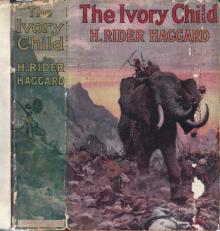 The Ivory Child
The Ivory Child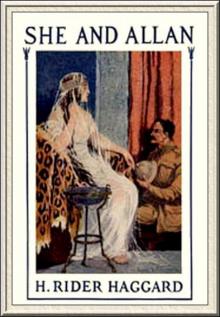 She and Allan
She and Allan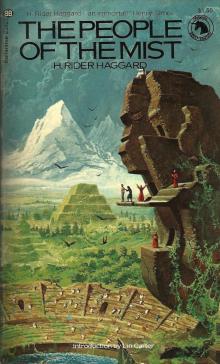 The People of the Mist
The People of the Mist She
She Morning Star
Morning Star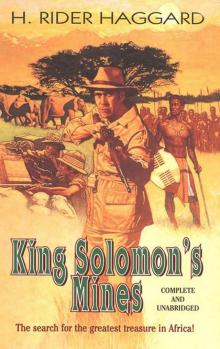 King Solomon's Mines
King Solomon's Mines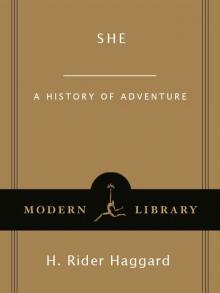 She: A History of Adventure
She: A History of Adventure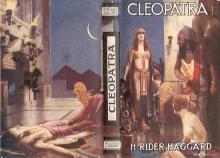 Cleopatra
Cleopatra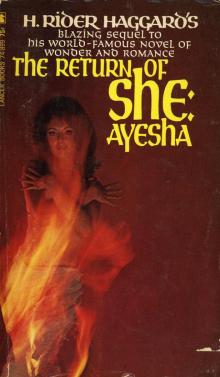 Ayesha, the Return of She
Ayesha, the Return of She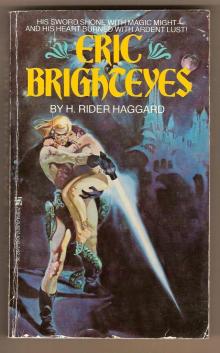 Eric Brighteyes
Eric Brighteyes Red Eve
Red Eve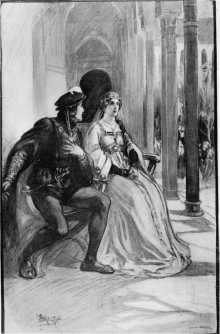 Fair Margaret
Fair Margaret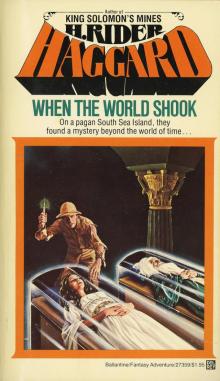 When the World Shook
When the World Shook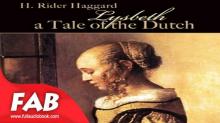 Lysbeth, a Tale of the Dutch
Lysbeth, a Tale of the Dutch Moon of Israel: A Tale of the Exodus
Moon of Israel: A Tale of the Exodus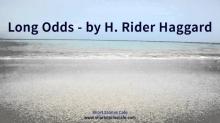 Long Odds
Long Odds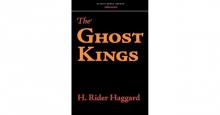 The Ghost Kings
The Ghost Kings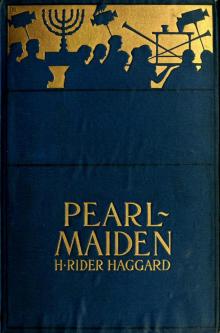 Pearl-Maiden: A Tale of the Fall of Jerusalem
Pearl-Maiden: A Tale of the Fall of Jerusalem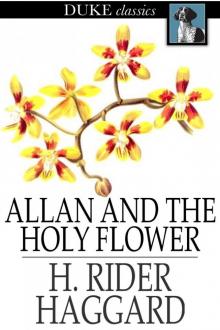 Allan and the Holy Flower
Allan and the Holy Flower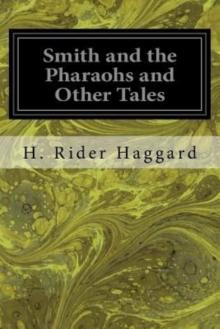 Smith and the Pharaohs, and other Tales
Smith and the Pharaohs, and other Tales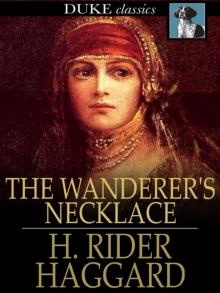 The Wanderer's Necklace
The Wanderer's Necklace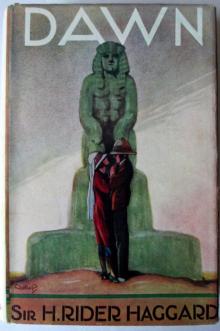 Dawn
Dawn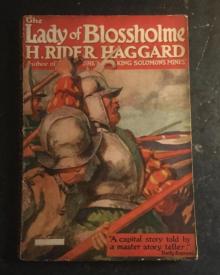 The Lady of Blossholme
The Lady of Blossholme Stella Fregelius: A Tale of Three Destinies
Stella Fregelius: A Tale of Three Destinies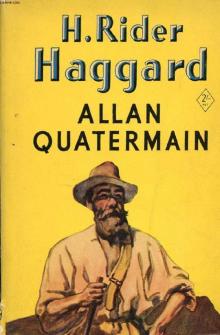 Allan Quatermain
Allan Quatermain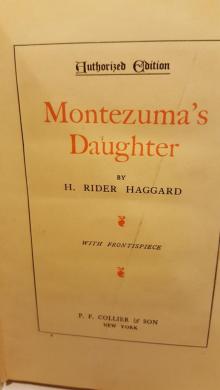 Montezuma's Daughter
Montezuma's Daughter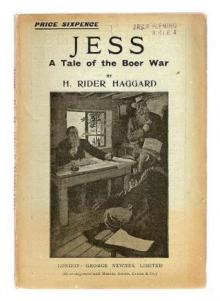 Jess
Jess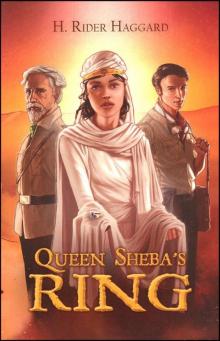 The Brethren
The Brethren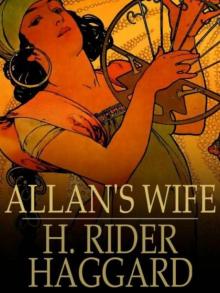 Allan's Wife
Allan's Wife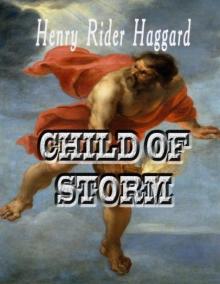 Child of Storm
Child of Storm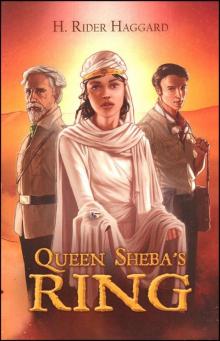 Queen Sheba's Ring
Queen Sheba's Ring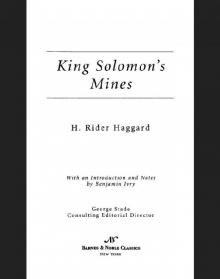 King Solomon's Mines (Barnes & Noble Classics Series)
King Solomon's Mines (Barnes & Noble Classics Series)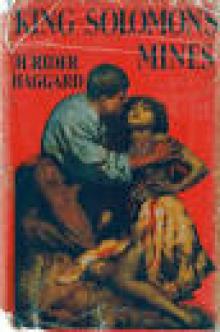 Complete Allan Quatermain Omnibus - Volumes 1 - 10
Complete Allan Quatermain Omnibus - Volumes 1 - 10